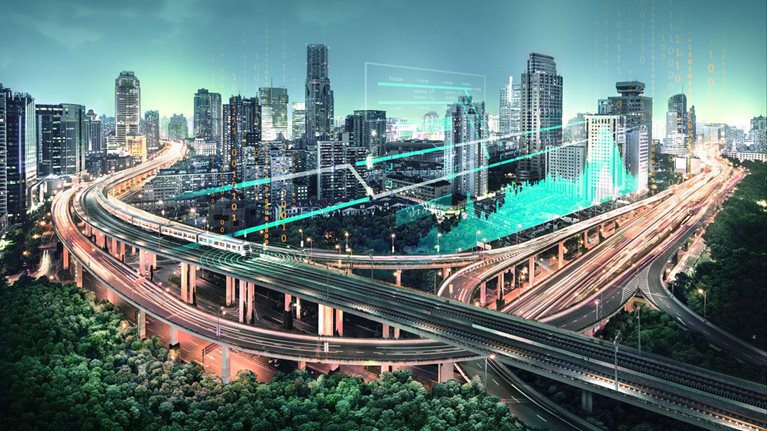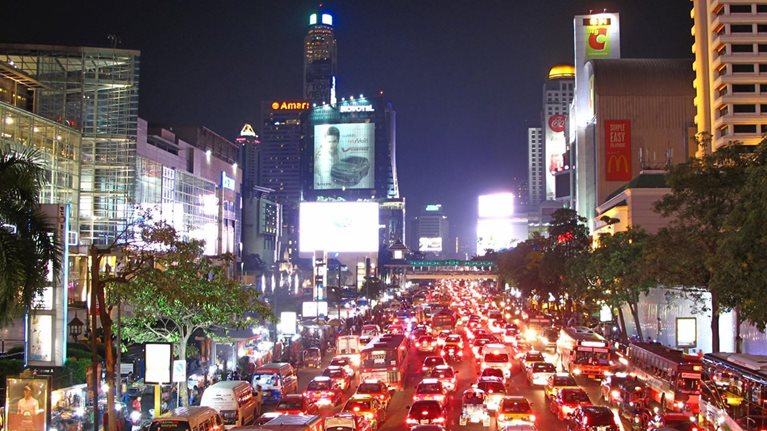The way that people get around cities is changing dramatically. Technologies such as autonomous driving, electric powertrains, and mobile data connectivity are emerging alongside new transportation services, like ride-hailing and vehicle sharing, to form integrated mobility systems. Such systems will make it easier for city dwellers to use multiple modes of transportation, often on the same journey, and to get around town more cleanly, efficiently, and safely than ever.
McKinsey estimates that in 50 metropolitan areas around the world, home to 500 million people, the benefits of integrated mobility systems, such as improved safety, could be worth up to $600 billion. Whether those benefits materialize, though, isn’t a sure thing. The outcomes that cities experience will depend on the choices that officials make about public policies and investments—particularly those related to infrastructure.
Stay current on your favorite topics
With so much at stake, city officials can benefit from defining a vision for the future of their cities’ mobility systems, and set out their infrastructure investments accordingly. Below, we describe how cities can accelerate the transition to integrated mobility in ways that also support their broader public goals.
Vehicle electrification and distributed energy generation. Global electric-vehicle (EV) sales have risen quickly, thanks to purchase subsidies, falling battery costs, fuel-economy regulations, and product improvements. From 2010 to 2016, battery pack prices fell about 80 percent, from approximately $1,000 per kilowatt-hour to about $227 per kilowatthour. 1 When battery costs drop below $100 per kilowatt-hour, EVs should achieve cost competitiveness with conventional vehicles.Renewable-power sources could also generate a notable share of the world’s electricity within the next 15 years, as their costs decline.
Cities that have prioritized reductions in local air pollution and greenhouse-gas emissions can encourage the shift toward EVs and low-carbon grid systems. Enabling the installation of residential solar and energy-storage systems would make it more economical to recharge EVs, and thus encourage EV ownership. These systems would also reduce grid loads, which helps to lower electricity prices at peak times and to free more capacity for vehicle charging. Officials can set the stage for these advances by working out the extent and makeup of the necessary charging systems, which remain unclear in many cities.
Autonomous vehicles. Autonomous-driving technology promises to lessen road-safety concerns, reduce the cost of transportation, and expand access to mobility. Autonomous vehicles (AVs) could also help ease traffic congestion, which costs more than 1 percent of GDP globally. Studies suggest that congestion is caused by a small proportion of vehicles. If those vehicles were automated, then traffic would flow more easily, which could mitigate the need for extra road capacity and free infrastructure funds for other purposes. Cities that expect to gain from the wide use of AVs can make plans to stimulate their uptake with physical infrastructure improvements, such as AV-only lanes, that work with autonomous and connected cars to optimize traffic flows with intelligent vehicle-to-infrastructure (V2I) transport systems. Maintaining roads well and posting clear signs should help AVs and human drivers to navigate effectively during the early days of AV adoption.
AVs should also give people more free time, from not having to drive. But this benefit might come with drawbacks. The low opportunity cost of spending time in an AV could encourage people to make more trips and live farther from city centers. Establishing incentives to steer AVs toward shared use can help curb demand increases and maximize the social returns from this innovation. Officials can consider using data-connectivity services to facilitate the pricing of infrastructure use. City planners can also influence the scale of investments in future infrastructure by setting standards for the density of urban development.
Land and street management. Changes in the number and mix of city vehicles will have important implications for how land is managed. Consider one easily overlooked land-use issue: parking. Parking space occupies up to 15 percent of public land in sprawling metropolitan areas. The smaller vehicle fleets required for integrated mobility should make it possible to put some parking space to more valuable uses, but a portion will still need to serve the transportation system. Cities where the use of ride-hailing services has increased quickly might consider easing the flow of traffic by turning some on-street parking spaces into curbside zones where passengers can climb into and out of vehicles.
Other mechanisms will be needed to manage the per capita increases in vehicle miles travelled that we have projected could take place in integrated mobility systems. Building more roads isn’t enough: on average, new roads become congested within seven years. Cities may wish to determine whether dynamic road-pricing systems can lessen demand, while also offsetting potential losses of fuel-tax revenues as people switch to EVs. Other measures, such as installing traffic lights controlled by artificial intelligence and promoting the use of shared vehicles, can help cities increase the effective capacity of roadways.
Transportation-mode mix. Public transit, and mass transit in particular, is essential to preventing congestion. But if public transit is infrequent or slow or otherwise unsatisfactory, then city residents might opt to use private mobility services more frequently, thereby making traffic congestion worse. Given the extended timeframes involved in maintaining and improving public transit, cities can benefit from devising long-term infrastructure plans according to their future visions for integrating public transit, private mobility services, bicycling, and walking.

Voices on Infrastructure
Our quarterly compendium on infrastructure and capital projects
In integrated mobility systems, infrastructure increasingly consists of physical components and software that enable greater use of mobility as a service. For example, cities could leverage the smart routing and dispatch algorithms of mobility providers to replace first- and last-mile bus services with licensed or subsidized ride hailing. Another approach would be to set up a public fleet of shared, self-driving, electric vehicles providing on-demand, door-to-door mobility at a lower cost than privately owned vehicles. Meanwhile, mass-transit rail systems, in combination with walking and cycling, would remain a vital part of the mobility system, offering unrivaled speed and capacity.
Getting ahead of the mobility transition
Advances in mobility are already affecting the transportation systems of major cities around the world, though trends are unfolding at different rates overall and from one city to the next. Ride-hailing services, for example, have grown rapidly over the past few years and now compete in many markets with traditional car-sharing providers as well as public transit and private vehicles. Cities are mostly dealing with these trends in isolation. But they can gain advantages by considering the future of mobility in a comprehensive, integrated way that anticipates the dependencies and reinforcing effects among trends. This helps them understand the potential pace and impact of change, analyze trade-offs, and lay out sound infrastructure plans. Cities that do this well stand a better chance of shaping the future of mobility in a way that balances benefits with potential adverse effects, and thereby improves the lives of their residents.
Download the full report on which this article is based, An integrated perspective on the future of mobility, (PDF–19.7MB).


